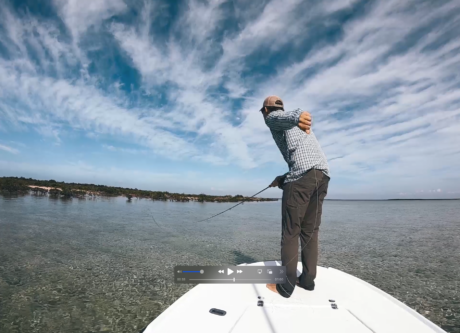
Bonefishing is about rhythm, cadence, and stealth. It’s about finding that perfect balance between urgency and restraint, speed and finesse. Yet even longtime bonefish anglers often strip too fast, too long, or without intention—and that’s where opportunities for strikes vanish.
In this post, we’ll break down three proven stripping techniques that’ll help you stay connected, control your rhythm, and incite more takes. Because when it comes to bonefish, every inch of line you move tells a story—and you want yours to end with a tight line.
When retrieving your fly for bonefish, most of the time a slow, medium length strip will get the job done. The speed of your strip should mimic the same speed as the bonefish, which, of course, is dependent on how fast the boat is moving as well. But sometimes, even with a smooth retrieve, fish can follow the fly a long way without ever committing. We know, it’s super frustrating. What happened? Did he not like the fly?
Sure, you can blame the fly pattern, calling it ‘a refusal,’ but chances are that’s not the case. It might actually be your stripping! So, here are 3 techniques to try before you change your fly.
Stripping Your Fly for Bonefish – 3 Techniques
- Change it Up. Your cast is good, you’ve got a solid presentation, bonefish are curious and following, but no takers. What do you do? Change up your strip cadence and pattern. Try using really short and quick strips, and voila! Sometimes, a bonefish that didn’t want anything to do with your initial attempt may be triggered with a change in your strip pattern. So we’re not sure why, but just like trout, sometimes changing up your retrieve from the norm can make all the difference. Short, quick strips also work well when you’re in close distances, keeping the fly moving over a shorter distance to evoke a strike before the fish makes his way close enough to notice you.
- Let it Dive. If a bonefish is following your fly over a long distance and won’t seem to eat your fly, try letting the fly dive abruptly, stopping your strip, and allowing your fly to dive to the bottom. This imitates the natural behavior of scared prey trying to dive to the bottom for cover, often causing the fish to strike. Just make sure to pay close attention to your fish, because if he stops eating your fly, it’s time to set the hook.
- Let it Sit. Whilst retrieving your fly, it’s super important that your fly always moves away from the fish. Prey’s instinct is to evade and swim away from a predator, and a fly stripped directly at a bonefish will likely cause the bonefish to spook. Therefore, make a cast that will present the fly at an angle that will cause the fly to move in front of the fish, then don’t move it! Let that fly sit on the bottom until the fish has either moved out of range of the fly or into a more favorable position, before you start stripping again. Remember, your fly doesn’t always have to be moving; sometimes, simply letting it sit is your best option.
So before your next cast, slow down. Think about your retrieve like a language, one that the bonefish speak. Then strip with intentionality. Try this on your next Bonefish Adventure!
Leave a Reply